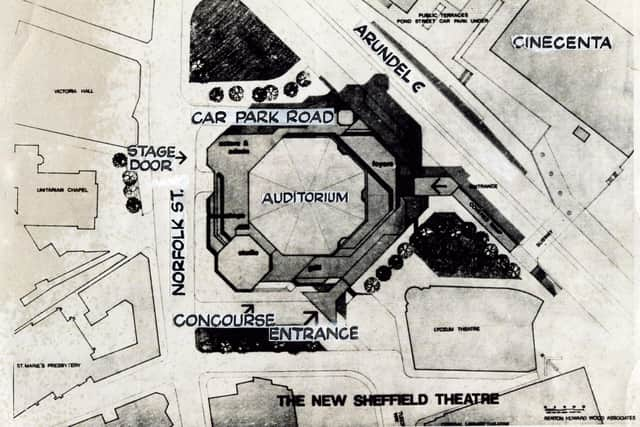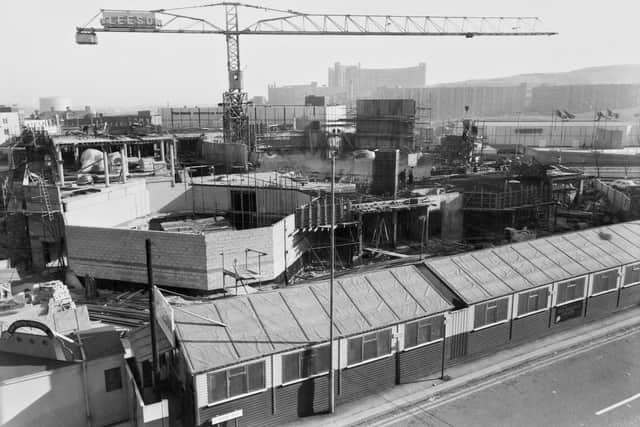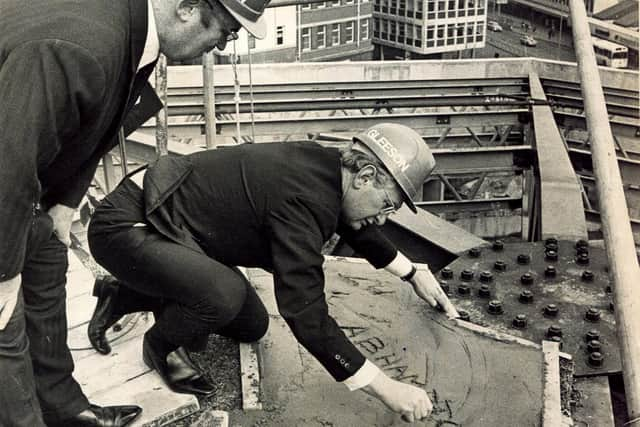Sheffield Crucible Theatre faced real-life dramas with rows before it even opened
and live on Freeview channel 276
The news went public in August 1966, when it was called a new Playhouse Theatre, with seating for 800-900 people.
Sheffield City Council was putting up half the cost of the building, so the announcement was made by the council leader, Alderman Ron Ironmonger.
Advertisement
Hide AdAdvertisement
Hide AdHe said a new city centre site would be found, better placed than the old Playhouse which stood on Townhead Street. The council planned to demolish the building to make way for a new road that never actually went ahead.


"We have taken this decision because there is a dearth of decent theatres in the city, particularly now, in view of what has happened at the Lyceum,” said Ald Ironmonger.
“Although we have plans for a Civic Arts Centre which will include a theatre, it is pretty certain that this will not come about before 1980 at least, and in the meantime it would be wrong if we did not support this venture for a new Playhouse.
“it will be 100 per cent professional with a resident company, who will not necessarily be there for 52 weeks a year. We are hoping that the National Theatre will use it as well.”
Advertisement
Hide AdAdvertisement
Hide AdPlayhouse director Colin George, who became the Crucible’s first artistic director, said the new theatre was a dream come true and wanted to take advantage of modern theatre designs.


The Lyceum was set for demolition and the Theatre Royal had been destroyed by fire.
The Playhouse was well known for daring, experimental theatre that appealed to a mainly younger audience and the same team took over the new theatre.
Controversy broke out about the Crucible’s famous thrust stage. Councillors had to be persuaded that it was better to have a design that really brought the audience into the heart of the action.


Advertisement
Hide AdAdvertisement
Hide AdCoun Peter Horton worried that the stage might limit the types of performances that could be put on and was told it was theatre’s answer to the TV age – giving audiences an experience they could not get at home.
It actually went to a vote in the council chamber.
Coun Reg Munn said: “Don’t damn the new Playhouse. It is going to be unique and make Sheffield well known.”
He wasn’t wrong but Ron Ironmonger took more convincing, this time on what audiences could see. The Star clearly loved this, giving space to both sides on successive nights.
Theatre administrator David Brayshaw defended the decision to put on Peer Gynt as the first full production. He said it was a big success and stressed the Crucible’s independence, free of council control.Peer Gynt followed opening show Fanfare, which featured 35 schoolchildren and Ian McKellen. The Star described it as a “lucky bag selection of local kids, Chekhov and cheeky music hall jokes”.
Advertisement
Hide AdAdvertisement
Hide AdSir Ron dismissed Peer Gynt, which he hadn’t seen, as far too avant garde and wanted to see plays with messages and something for the intellectuals, as well as political meetings, concerts and brass bands.
He said: “Basically, it is there to entertain the Sheffield public – and this should never be forgotten.”